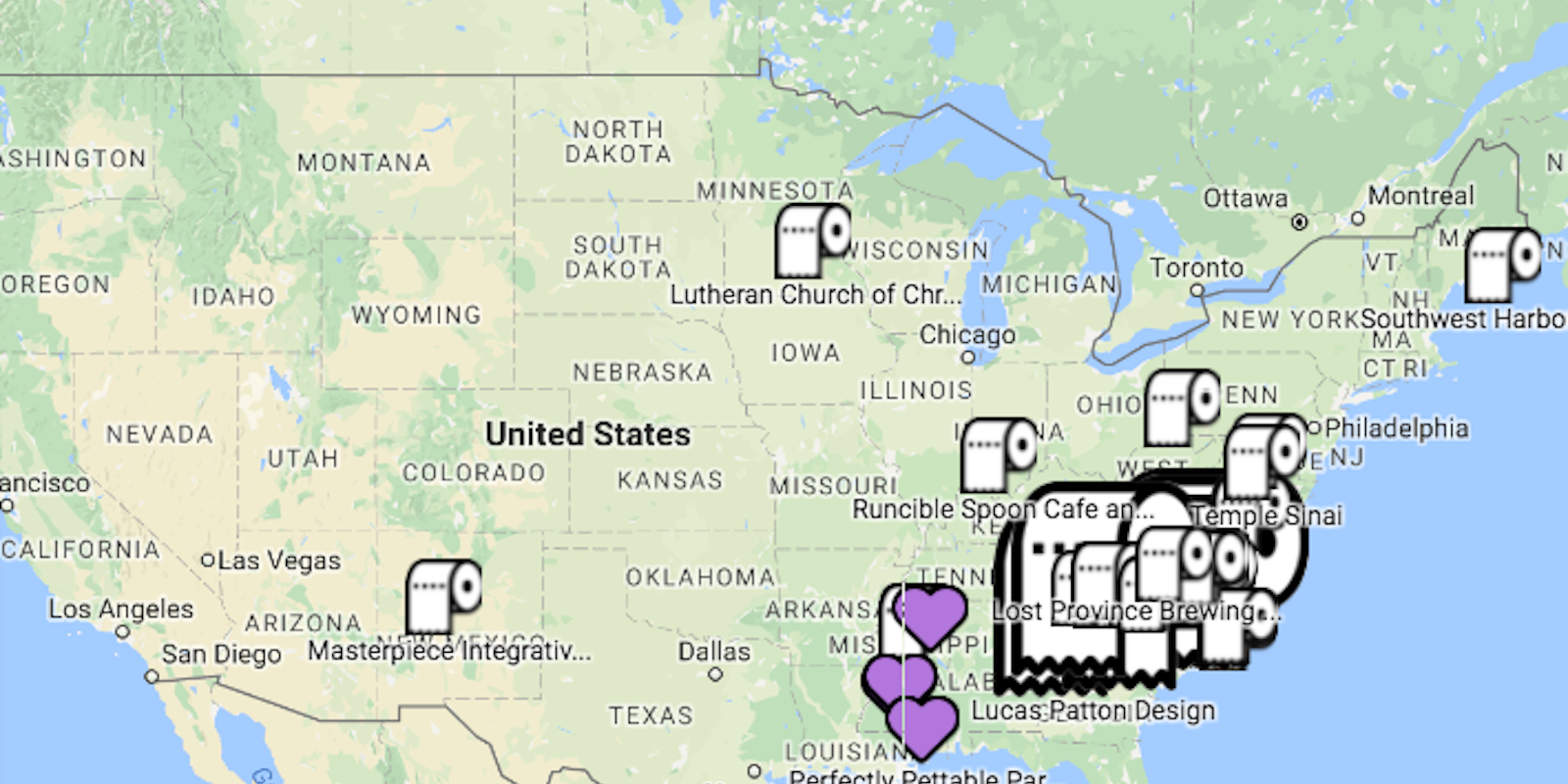A crowdsourced bathroom map has emerged to show trans people where they can access bathroom facilities in public without harassment.
Called “Safe Bathroom Club,” the map features bathrooms where discrimination isn’t tolerated and also lists businesses that are LGBTQ-friendly.
“Safe Bathrooms Club is a directory of businesses and organizations who have committed to providing safe spaces and bathrooms for everyone regardless of their gender identity, gender expression, sexual orientation, race, age, or disability status,” the club explains on its “about” page. “There are now close to 200 businesses and organizations listed with new places being added daily. We are accepting map submissions from businesses and organizations nationwide.”
The map mainly features trans-accepting bathrooms across North Carolina—where H.B. 2 notoriously keeps transgender people from using the bathroom that corresponds to their identity—but public facilities and businesses in Virginia, Indiana, Maryland, and Mississippi are included.
Business owners and organizations can add their facilities to the map by filling out a Google form describing their location. To confirm a business or organization, the club asks for “social proof,” such as a post on social media, a photo of a gender neutral bathroom, a trans-accepting mission statement, or a trans-supportive antidiscrimination policy.
The project began shortly after H.B. 2 was passed in North Carolina and is co-run by River Luck and Emily Waggoner, a North Carolinian couple currently living in Boston; Luck is a trans man, and Emily is a cis woman.
“Ever since I was 4 years old, I have dealt with bathroom harassment because of my appearance,” Luck says on the site’s about page. “Now, I try to avoid public restrooms all together unless there is a family restroom, all-gender, or unisex option. It isn’t worth the hassle or fear of violence.”
As Luck’s partner, Waggoner was inspired to run the club after taking a road trip to North Carolina with Luck. Across the state, going to public facilities became a hassle: one that she hadn’t fully realized until seeing trans discrimination firsthand.
“There were multiple occasions where neither of us felt that he would be safe in the bathroom, so he would have to hold it until we found another spot,” Waggoner explains.
A similar project, REFUGE Restrooms, also provides a list of locations where trans and gender non-conforming people across the country can go to the bathroom in peace. Anyone can submit a restroom, and the site also hosts a comment and rating system that allows users to provide feedback based on their bathroom experience.
Universities have taken up similar measures in the past. Rutgers University’s Center for Social Justice Education and LGBT Communities hosts a single-use bathroom guide for the university’s New Brunswick campus. Meanwhile, the University of Utah provides a list of single-occupancy and gender neutral bathrooms on their LGBT Resource Center webpage.
“This inventory of campus restrooms is provided to ensure greater safety and privacy for transgender, nonbinary, and gender non-conforming people when using a public restroom,” the website notes. “Many trans/nonbinary/GNC students have to plan their day around where a bathroom they can use is located. This list will hopefully help.”


